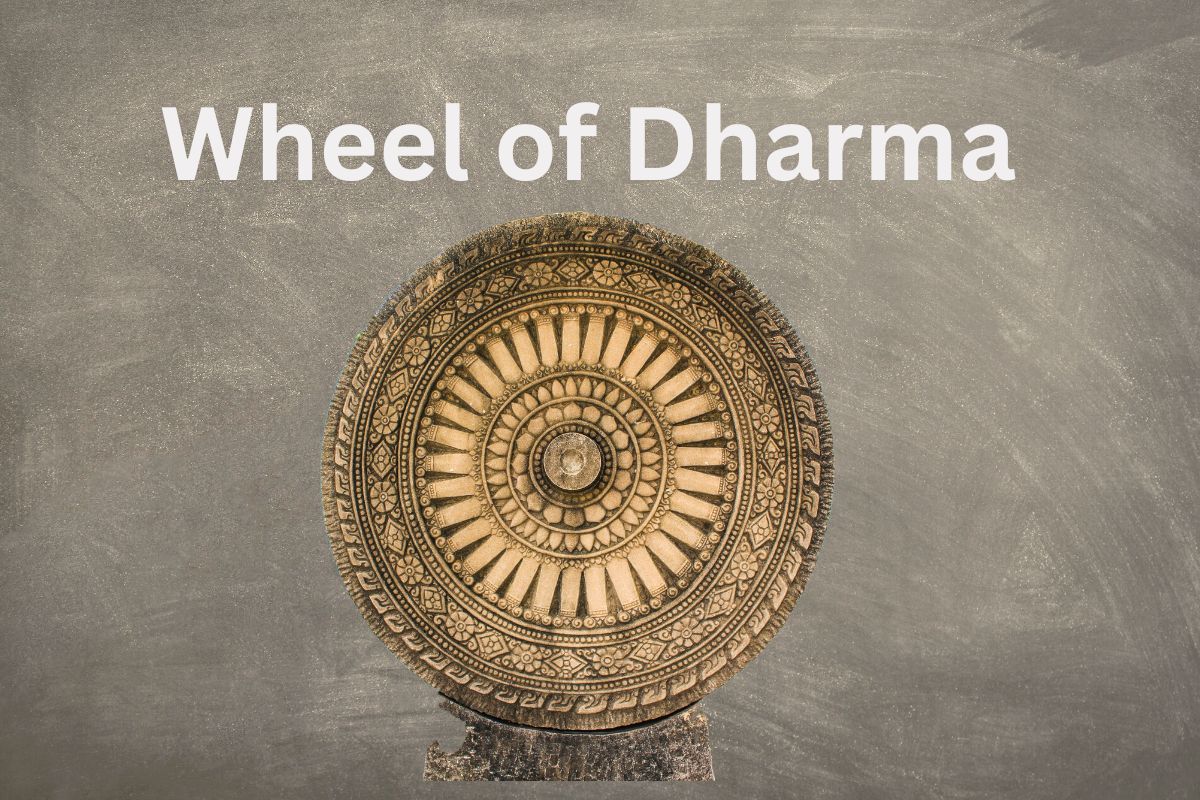The wheel of dharma is associated with Buddhism across the globe. Dharmachakra, or the wheel of dharma, is not only the oldest symbol but also among the eight auspicious symbols of Buddhism. Like Buddhism, the wheel of dharma likely evolved from Hinduism and is found in Jainism, too.
What Does the Wheel of Dharma Mean?
Dharma, or the path for attaining enlightenment to reach nirvana, is where the concept of Dharmachakra comes in. It’s often called the wheel of law and looks like a chariot wheel containing varying numbers of spokes.
In some Dharmachakra, you can also find swirling shapes in the middle of the wheel or an empty circle. You can also spot a yin-yang symbol or a second wheel at the center.
Though the color of the wheel of dharma can be anything, generally, it is gold. You can interpret the wheel of dharma in many ways. The most common wheel has eight spokes representing the eight-fold path and is one of the earliest symbols of Buddhism.
To understand the Dharmachakra properly, you need to know about its parts.
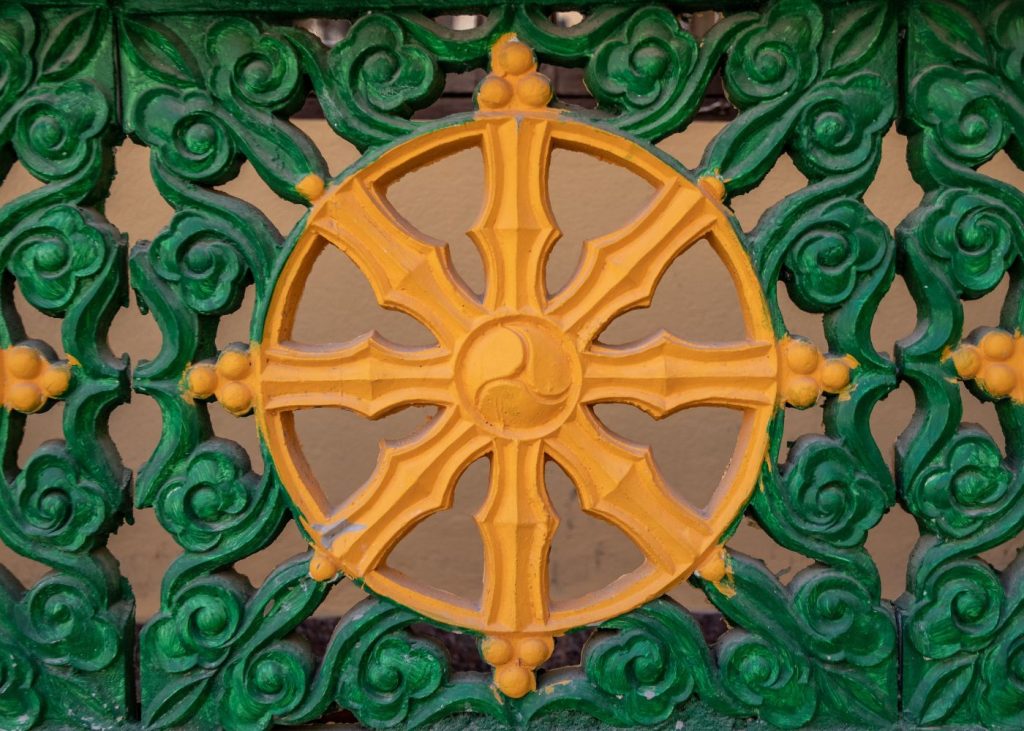
The Parts of the Wheel of Dharma
The wheel of dharma is made up of three parts, the spokes, the hub, and the rim. Each of these parts has a separate meaning.
- The Circle: The circular pattern is a symbol of Buddha’s perfection in teaching and perfection of the dharma – the belief.
- The Rim: The rim is a symbol of holding things together. Here it signifies that anyone can preserve dharma practice through meditation and concentration.
- The Hub and Whirls: The hub is also an important signifier. It represents moral discipline. The swirls on the hub are also important symbols signifying three jewels or treatures: Buddha, Dharma, and Sangha. Other than that, they’re represented with red, yellow, and blue, symbolizing joy.
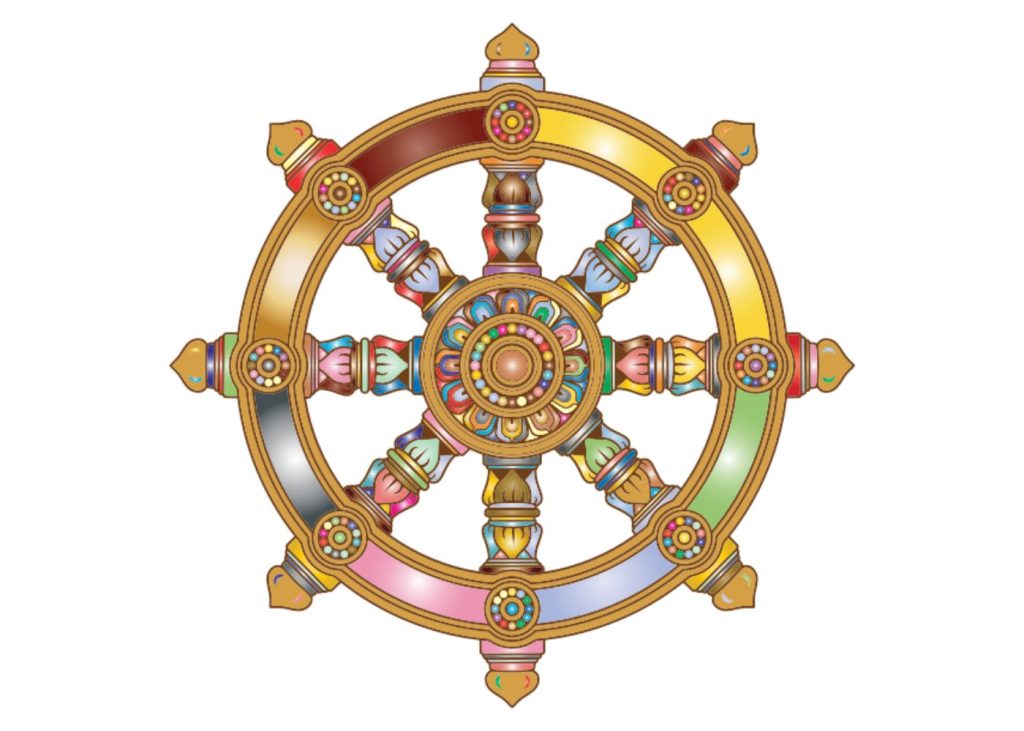
The Spokes
Within the wheels, there are varying numbers of spokes, and each set of spokes has a different meaning based on the number of spokes the circle has.
- Four spokes: The four-spoked wheel symbolizes the four noble truths and the four dhyanas. It is one of the rare wheels that are commonly seen.
- Eight spokes: The most common wheel of dharma is the eight-spoke wheel. It represents the noble eightfold path and is seen generally at almost all monasteries.
- 10 spokes: The ten-spoked dharma wheel represents the ten directions.
- 12 spoke: When a wheel of dharma has twelve spokes, it signifies the twelve links of dependent origination.
- 24 spokes: The wheel with 24 spokes is known as the Ashoka Chakra. It commonly symbolizes the 24 ideal qualities that a Buddhist follower should have. However, it is also a signifier of the 12 links of dependent origination and the reverse of the 12 links, signifying liberation from samsara. As a whole, it is also a symbol of the continuous cycle of reincarnation.
- 31 spokes: According to Buddhist cosmology, the 31-spoked wheel signifies the 31 realms of existence.
Apart from the varying number of spokes, they also protrude beyond the wheel-like spikes that symbolize different penetrating insights.
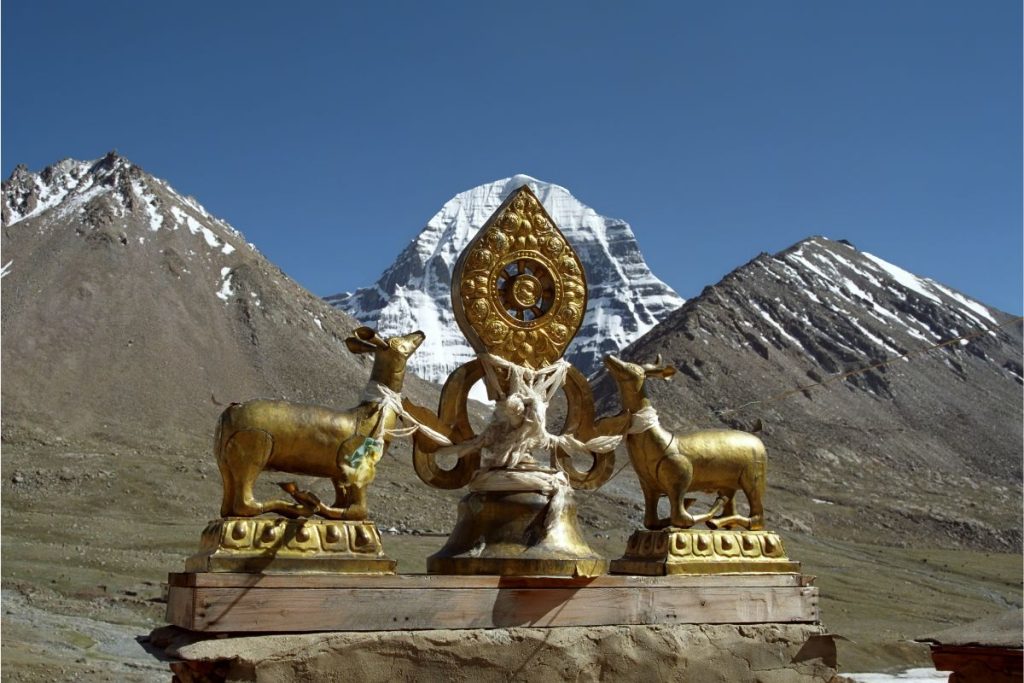
History of the Wheel of Dharma
The Ashokan pillars, built between 304 to 232 BC, are the oldest of all sources where you can trace the wheel of dharma. Emperor Ashoka ruled in India, teaching Buddhist principles. However, he never forced it upon his subjects. Many such pillars are still there today, proving how he encouraged laypeople to practice Buddhism.
Uses of the Wheel of Dharma
The dharma chakra or wheel of dharma propagated by Emperor Ashoka is a part of the Indian National Flag. In Buddhist cultures, the dharma chakra is portrayed in Images of the Buddha. It appears on the hands or feet of the Buddha, indicating the marks of a great man.
The Wheel of Law
The wheel of dharma is also related to the wheel of the law. In Buddhist scriptures, the turning of the dharma chakra is correlated with the preaching of the Buddha.
The wheel is a signifier of the kings – a symbol of advancement and a weapon to destroy an obstruction. Similarly, in Buddhist teaching, the wheel of dharma signifies a person’s progress by defeating desires and illusion – the obstacles to enlightenment.
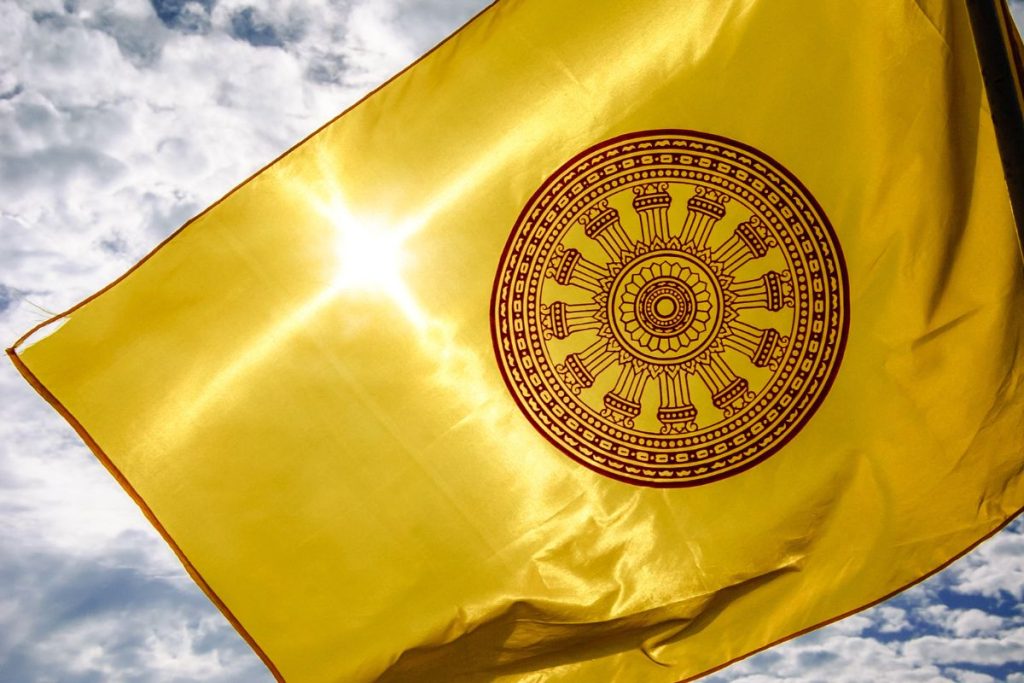
Significance of the Wheel of Dharma in Different Cultures
Hinduism
In Hinduism, the wheel of dharma is a symbol of the protector. It’s one of the four weapons that the Hindu god Vishnu owns.
Vishnu is held responsible for protecting and preserving humans and maintaining law and order in the world. The chakra in Vishnu’s hand, Sudarshan Chakra, is the weapon that safeguards humans from demons. In another way, it symbolizes enlightenment – how a person attains enlightenment by conquering desire and passion.
Tibet
In Tibet, the wheel of dharma is a Buddhist symbol signifying the first sermon delivered by the Buddha at the deer park. The dharma chakra is seen to be placed between two deer. While the Buddha gave his sermon, the deer also gathered to listen. It is also a symbol that Buddism values humans and animals.
However, the wheel of dharma can also be seen in some Tibetan gods. It symbolizes diminishing evil and ignorance and advancing toward the righteous path.
Buddhism
The Dharma chakra in Buddhism is the symbol of the teachings of Lord Buddha. It also shows the Buddhist faith prevailing worldwide.
According to Buddhist scriptures, Gautama Buddha turned the wheel three times after preaching the sermons. The three teachings of the Buddha in his sermons – the four noble truths, the wisdom sutras (nature of sunyata), and the doctrine of Buddha-nature – are referred to as the turning of the wheels of dharma.
Buddhism is widely related to the wheel symbol or dharmachakra. The wheel with two deer beside symbolizes the ruru deer of the deer park at Sarnath, where the Buddha delivered his first sermon. The deer are also considered a manifestation of the Bodhisattvas.
The wheel, a symbol of advancement and power, destroys hurdles and sets people toward righteousness.
If you’ve found this article helpful, check out this post on the unalome symbol’s hidden meanings.

